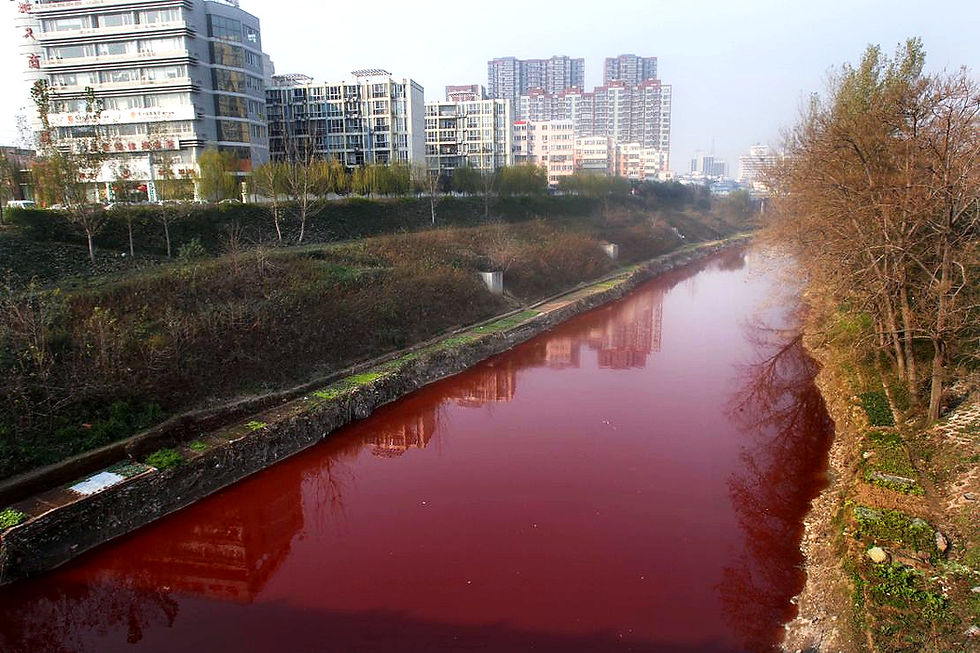Water Stress: Challenges, Impact, and Innovative Solutions.
- Selasi Dadzawa

- Jan 9
- 3 min read

What is Water Stress?
Water stress occurs when the demand for clean, usable water exceeds supply. Sometimes it’s Mother Nature at play— local ecological conditions like droughts and drying rivers cause physical scarcity. Other times, the problem comes down to underdeveloped infrastructure — things like lack of adequate water sanitation, storage, distribution and equipment.
Our growing population and expanding cities are basically throwing a massive water consumption party; industry is joining in, climate change is turning up the heat, and pollution is crashing the event. The guest list keeps growing, but the water supply isn't getting any bigger.
Ultimately, the outcome isn’t pretty: lack of access to water leads to public health risks, disrupts industrial activity and food security, and impedes economic growth.
And if you think it’s only happening somewhere else, think again. Water stress is showing up all over the globe, with the hardest hit regions spread across Asia, Africa, Europe and the Americas.
The Impact of Water Quality on Water Stress
Water stress isn’t just a matter of how much but also of how clean.
You could have all the water in the world, but if it’s too polluted to drink, use for sanitation, or leverage for industrial processes, it’s of little use. Pollutants like industrial chemicals, synthetic fertilizers, dyes and surfactants can all transform potentially valuable water resources into environmental liabilities.
Take the textile industry as a prime example. Those vibrant colors on your favorite shirt? They come at a hidden cost. The dyeing and finishing processes create wastewater that contains a complex cocktail of toxic contaminants. When this wastewater isn't properly treated, it infiltrates rivers, lakes, oceans and ecosystems, creating a domino effect of environmental challenges. In regions already grappling with water scarcity, poor water quality becomes an additional layer of complexity.
The Role Of Technology
Technology is revolutionizing water conservation and treatment across industries and cities. Smart solutions are transforming how we approach water use, from industrial processes to household consumption. Innovation is helping industries and households clean up their act—literally. Here’s how:

Industrial Solutions:
IoT-enabled sensors and smart meters are like the Fitbit of water management. They detect leaks, optimize water flow, and keep waste in check, and monitor performance to ensure industrial activities only use the volume of water they need—no more, no less.
Advanced treatment technologies (like ours!) enable near-pure wastewater recycling, creating closed-loop systems in water-intensive industries.
Many industrial processes require heated water, which can be energy-intensive to maintain. Solutions like heat recovery systems and renewable energy-powered processes are stepping in to help industries cut down on energy use. These innovations boost efficiency while reducing the environmental impact—industries get smarter, and the planet gets a break.

Urban and Household Solutions:
Smart home water monitoring systems spot leaks and track consumption patterns, before small drips become big problems.
Modern water-efficient appliances and fixtures are doing their part too, proving that saving water doesn't mean sacrificing performance.
Households have greywater recycling systems that allow for water reuse. That shower you took this morning? Its water could be helping to flush your toilet later. It's about making every drop count twice.
Cities are also getting smarter about water. Smart irrigation systems are weather-savvy—they know when to water and when to wait, keeping urban green spaces lush without waste. Meanwhile, there are many urban rainwater harvesting technologies in existence today, proving that cities can be part of the solution rather than the problem.
By integrating these innovations at both industrial and household levels, we can significantly reduce water waste, protect ecosystems, and develop more sustainable water management practices.



Comments